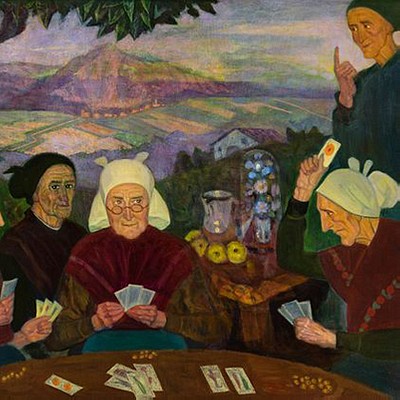JULIÁN DE TELLAECHE (Vergara, Gipuzkoa, 1884 - Lima, Peru, 1957). "Ship's prow". Oil on canvas.
Lot 115
About Seller
Setdart Auction House
Carrer Aragó 346
Barcelona
Spain
Setdart Subastas was born in 2004 and is currently the first online art auction in Spain with solidity, prestige and reliability guaranteed by our more than 60,000 users. Setdart has a young, dynamic and enterprising team ready to successfully manage the purchase and sale of art works through custom...Read more
Estimate:
EUR€9,000 - EUR€10,000
$9,677.42 - $10,752.69
Absentee vs Live bid
Two ways to bid:
- Leave a max absentee bid and the platform will bid on your behalf up to your maximum bid during the live auction.
- Bid live during the auction and your bids will be submitted real-time to the auctioneer.
Bid Increments
| Price | Bid Increment |
|---|---|
| EUR€0 | EUR€10 |
| EUR€200 | EUR€25 |
| EUR€500 | EUR€50 |
| EUR€1,000 | EUR€100 |
| EUR€3,000 | EUR€200 |
| EUR€5,000 | EUR€500 |
| EUR€10,000 | EUR€1,000 |
| EUR€20,000 | EUR€2,000 |
| EUR€50,000 | EUR€5,000 |
About Auction
By Setdart Auction House
Dec 14, 2021
Set Reminder
2021-12-14 08:00:00
2021-12-14 08:00:00
America/New_York
Bidsquare
Bidsquare : 19th & 20th Century Fine Art
https://www.bidsquare.com/auctions/setdart-auction-house/19th-20th-century-fine-art-7992
Gaudi, Sorolla, Torres Garcia, Maclet, TSUGUHARU FOUJITA, Benjamin Palencia Setdart Auction House sofia@setdart.com
Gaudi, Sorolla, Torres Garcia, Maclet, TSUGUHARU FOUJITA, Benjamin Palencia Setdart Auction House sofia@setdart.com
- Lot Description
JULIÁN DE TELLAECHE (Vergara, Gipuzkoa, 1884 - Lima, Peru, 1957). "Ship's prow". Oil on canvas. Signed in the lower right corner. Measurements: 52.5 x 61.5 cm; 70 x 77 cm (frame). Ships, masts, docks, sails and sailors become the real protagonists of Tellaeche's paintings. With a Cezannian style, in Tellaeche's paintings the brushstroke and the color become independent of the model to express themselves, giving great importance to the pictorial order and the artistic personality. They are variegated compositions, represented with a marked constructive rigor and characterized by an iconographic imaginary close to the sea and its surroundings. Julián de Tellaeche left his job as a sailor to devote himself to painting, thanks to Eduardo Chicharro, who taught him and encouraged him to travel to Paris to complete his training. After being in the French capital, in the Academies Julien and Colarossi, he settled in Lequeitio, beginning to exhibit in 1910 (IV Exhibition of Modern Art of Bilbao), at which time he began his participation in national and international exhibitions in various cities (Barcelona, Brussels, Stockholm, San Sebastian, Madrid, etc.). The Civil War caused him to go into exile in the Parisian capital, moving in 1952 to the city of Lima, where he continued his artistic career and worked as curator of the Peruvian National Artistic Treasury. He never forgot the world of the sea, frequently capturing it in his works. He was also known for his membership in the founding group of the so-called Association of Basque Artists (1911). His work is preserved in private collections (mainly Spanish) and in institutions such as the Museo Nacional Centro de Arte Reina Sofía in Madrid, the Museo Provincial de Vitoria, the Museo de Bellas Artes in Bilbao, the BBVA Collection, the Museo de San Telmo in San Sebastián, etc.
- Shipping Info
-
In-house shipping available. Please inquire at admin@setdart.com.
-
- Buyer's Premium



 EUR
EUR CAD
CAD AUD
AUD GBP
GBP MXN
MXN HKD
HKD CNY
CNY MYR
MYR SEK
SEK SGD
SGD CHF
CHF THB
THB















